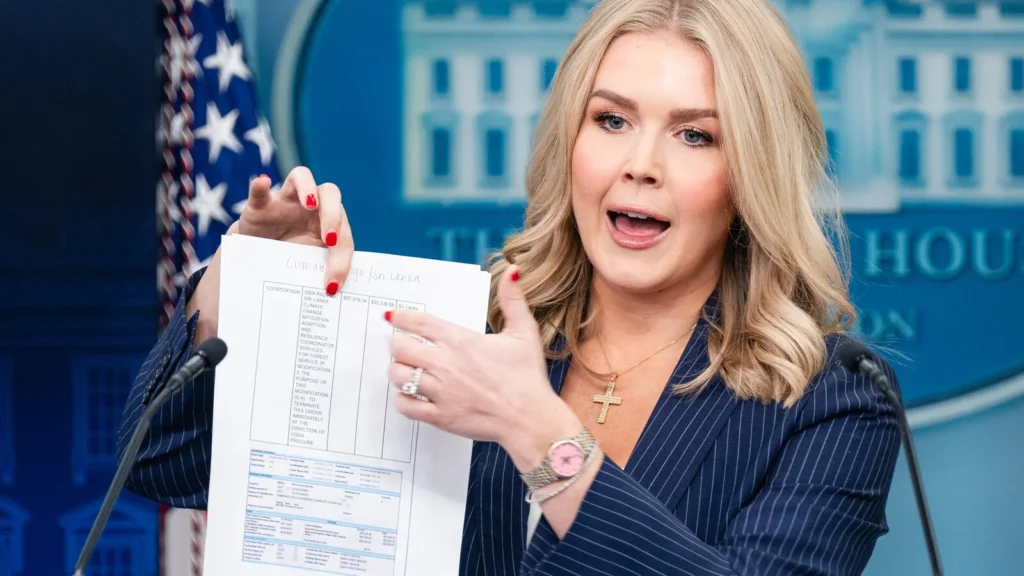DOGE’s Billion-Dollar Deletions: A Closer Look at DOGE’s Mysterious Changes
The Department of Government Efficiency (DOGE), an initiative led by Elon Musk, has once again revised its reported cost-saving measures. Over the past week, the organization has removed or altered over 1,000 previously canceled contracts, effectively erasing $4 billion in savings claims. This marks the second instance in which the group has reduced its reported financial impact, raising questions about the accuracy and methodology behind its calculations.
Observers have noted that such significant adjustments suggest either a lack of proper verification or a deliberate effort to reshape public perception. The group’s frequent modifications have made it difficult to determine how much of its reported cost-cutting initiatives are genuinely accurate. While DOGE continues to emphasize its commitment to reducing government waste, the inconsistencies in its data cast doubt on the reliability of its claims.
Repeated Revisions and Disappearing Savings
Since its launch, DOGE’s highly publicized “wall of receipts”—a list of terminated government contracts—has faced multiple revisions. Initially, the initiative boasted savings of $16 billion, but this figure has gradually declined to under $9 billion. Notably, some of the most significant savings claims were removed, including:
- $1.9 billion attributed to canceling an Internal Revenue Service contract for technology support, despite records indicating the contract was already nullified in November.
- $149 million linked to the termination of a Health and Human Services contract, which contained inconsistencies and incorrect references to unrelated agreements.
- $133 million reportedly saved by canceling a U.S. Agency for International Development contract in Libya, although the contractor had already completed the project.
Interestingly, while high-profile claims have disappeared, DOGE has simultaneously added numerous new canceled contracts to its list. However, these additions have primarily consisted of smaller-scale cuts, further diluting the overall reported savings. This shifting landscape raises concerns that the organization may be prioritizing quantity over quality when compiling its data.
Experts Raise Concerns Over Data Accuracy
Budget analysts and contracting specialists have expressed skepticism regarding DOGE’s approach to identifying and reporting savings. Many believe that the group’s data lacks proper verification, leading to inflated or erroneous figures. Jessica Riedl, a senior fellow at the Manhattan Institute, has suggested that the process appears disorganized, stating that it seems as though various agencies were asked to compile lists of contracts without proper vetting.
Compounding the issue, several reports have pointed out that DOGE’s data includes multiple instances of double counting, misclassification, and failure to account for pre-existing contract cancellations. Some experts argue that this lack of oversight diminishes the credibility of the initiative’s efforts and raises questions about its overall competence in managing government efficiencies.

Despite growing concerns, DOGE continues to maintain that the numbers originate directly from agency contracting officials. The organization has since added disclaimers to its website, attributing errors to federal departments rather than internal miscalculations. However, critics argue that shifting the blame does little to address the fundamental issues with DOGE’s methodology.
Public and Political Reactions
The controversy surrounding DOGE’s reported savings has sparked a wave of reactions from both the public and political figures. Some view the initiative as a bold attempt to streamline government spending, while others see it as a misleading effort plagued by unreliable data. Lawmakers on both sides of the political spectrum have called for greater transparency regarding how DOGE calculates its savings and why errors continue to persist.
Several media outlets have conducted independent investigations into DOGE’s claims, often uncovering discrepancies that further fuel skepticism. Reports indicate that some canceled contracts listed on the “wall of receipts” had either been terminated years prior or never existed in the first place. These findings have amplified calls for an independent audit of DOGE’s operations to ensure accountability.
The Bigger Picture: Transparency or Misdirection?
While DOGE’s efforts to highlight government inefficiencies remain a focal point of its mission, the ongoing adjustments to its reported savings cast doubt on the credibility of its claims. As billions vanish from the official tally, the initiative faces increasing scrutiny regarding its ability to deliver real and measurable financial improvements.
At its core, the situation raises a fundamental question: is DOGE genuinely uncovering inefficiencies within the federal government, or is it presenting misleading figures to create an illusion of success? If the latter proves true, it could have serious implications for trust in public institutions and initiatives aimed at reducing government waste.
As updates continue to emerge, observers remain watchful of whether DOGE can establish itself as a legitimate force for cost-cutting or if its reported savings will continue to dwindle under closer examination. Moving forward, the initiative must take concrete steps to enhance data accuracy, improve transparency, and regain credibility in the eyes of taxpayers and policymakers alike.


